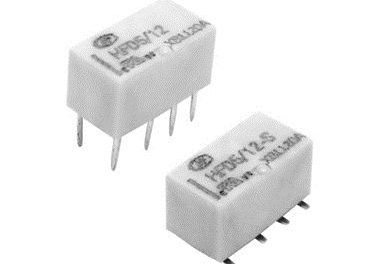Energy harvesting is the creation of off-grid electricity where it is needed using ambient energy, from sunshine to vibration or temperature difference. There are the very successful forms of energy harvesting and there are the basket cases of negligible commercial success – little more than research curiosities.
Current successes
Success currently lies in electrodynamics which started with the humble bicycle dynamo and small wind turbine and progressed to a host of things from regenerative braking in vehicles to kites and floors generating electricity. For example, Pavegen, a supplier of tiles that generate electricity when stood on, even believe that it can one day use electrodynamics to make two millimetre carpet underlay that generates power from footfall.
Another success is the photovoltaics we see all around us. Argonne National Laboratory in the US, KIMM of Korea and many others see that progressing to transparent conformal versions and ones harvesting infrared, visible and ultraviolet light will continue to allow photovoltaics to be used more ubiquitously. Low cost photovoltaic materials are starting to be taken seriously, such as perovskites, as covered in the IDTechEx Research report “The Rise of Perovskite Solar Cells 2015-2025”.
Thermodynamics has a bright future powering sensors and adjusting heating radiator valves remotely followed by, many believe, creating electricity from vehicle engines. Transparent and flexible thermoelectrics have been demonstrated. Organisations have found that Skutterudite enhances performance but this is one of many developments being explored – more details are covered in the IDTechEx Research report, “Thermoelectric Energy Harvesting 2014-2024: Devices, Applications, Opportunities”. IDTechEx Research expects thermoelectric energy harvesting to overtake piezoelectric energy harvesting in market value. A full analysis of the whole subject is given in the new IDTechEx report, “Energy Harvesting: Off-grid Renewable Power for Devices, Vehicles, Structures 2015-2025” which encompasses all forms of energy harvesting from microwatts to tens of kilowatts in power output and gives forecasts for the leading ones.
There is even a new probability that basketcase energy harvesting methods may prove useful after all. Take magnetostriction as an example.
Radically new magnetostriction
Firstly let us look at something that can do two things. It can improve electrodynamic energy harvesting, where it uses permanent magnets, by replacing them with an alternative that does not suffer the problems of cost (due to using dysprosium and neodymium) and temperature. Secondly, it can possibly be a viable form of magnetostrictive energy harvesting in its own right. Traditionally magnetostriction has come from brittle magnetic alloys that hum in a transformer. It has been noted that the reverse – their bending or compression – could in principle create electricity but that seems an unreliable, weak alternative to electrodynamics. Market success zero. Research effort very small.
However, in 2015, the materials scientists at the University of Maryland and Temple University in the USA have stumbled across a totally new phenomenon that may change all that. They have created potentially low cost “non Joulian” magnets that expand when being magnetised and think this may be key to widespread adoption of magnetostrictive energy harvesting. Whether that means we move from microwatts to watts or more remains to be seen.
About 175 years ago, physicist James Prescott Joule (the same person after which the unit of work energy, the joule, is named) discovered magnetostriction, where iron-based magnetic materials minutely distort in shape, but not in volume, when placed in a magnetic field. Since then, it has been pretty much accepted that this was the way all magnetic materials behaved but the new work conducted on iron alloys (including iron-gallium, iron-germanium, and iron-aluminum) has resulted in the observation of a property never before encountered in magnetic materials: a change in volume whilst in the process of magnetisation. As this was fundamentally different to the phenomenon discovered by Joule, the new magnets are called “non-Joulian magnets.”
“Our findings fundamentally change the way we think about a certain type of magnetism that has been in place since 1841,” said Dr Harsh Deep Chopra, professor and chair of mechanical engineering at Temple University. “We have discovered a new class of magnets, which we call ‘Non-Joulian Magnets’, that show a large volume change in magnetic fields. Moreover, these non-Joulian magnets also possess the remarkable ability to harvest or convert energy with minimal heat loss.”
To create these new magnetic materials, professor of materials science and engineering Manfred Wuttig, and Chopra heated certain iron-based alloys in a furnace to approximately 760ºC (1,400ºF) for 30 minutes, then quickly cooled them to room temperature. Once cooled, the new materials demonstrated the non-Joulian behavior. In studying the newly-formed materials under a microscope, the team was amazed to find tiny cell-like structures that appeared to be responsible for the strange non-Joulian magnetostriction they observed.
“The response of these magnets differs fundamentally from that likely envisioned by Joule,” said Professor Wuttig. “He must have thought that magnets respond in a uniform fashion. Knowing about this structure will enable researchers to develop new materials with similarly attractive properties.”
New approach to conventional magnetostriction
Meanwhile, there is a completely different approach exploiting conventional magnetostriction in potentially low cost materials. It is a high load, low displacement technology. Oscilla Power, Inc. (OPI) in the USA is developing a suite of proprietary, high-impact renewable energy and energy harvesting solutions based on low cost, readily available magnetic materials. Power outputs are not yet revealed.
Oscilla Power’s Triton Wave Energy Harvester is claimed to have numerous advantages over other approaches to wave energy generation, allowing it to generate power at a reasonable cost, they say. Its “IMEC-enabled” generators are unique among wave energy technologies because they can produce energy from waves with no significant relative motion between or significant dimensional change of their components. This reduces or eliminates sub-system (e.g. lubrication, bearings, seals for moving components) costs and will significantly reduce operating and maintenance costs due.
Its Triton wave generator experiment can lead to both on and off-grid power though the company does not reveal the power level achieved so far. Triton does not include significant quantities of any supply-limited or expensive materials because it mainly employs aluminium, iron, copper, and steel and could employ concrete and glass-reinforced plastic. While small quantities of commercially available rare earth magnets are used to create a driving magnetomotive force, these could be replaced by ferrite magnets if cost or availability become an issue. Low cost manufacturing is promised. In addition, the buoys and anchors have no complex parts, which facilitates their low-cost manufacture. Relative ease of deployment and high efficiency across the wave spectrum are in prospect.
For more on the latest progress across all forms of energy harvesting, with ten year forecasts, see the new IDTechEx report, “Energy Harvesting: Off-grid Renewable Power for Devices, Vehicles, Structures 2015-2025”.



